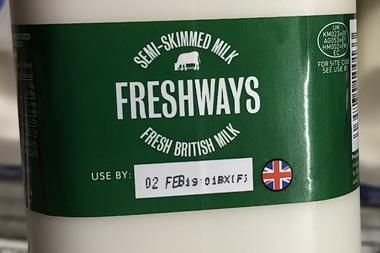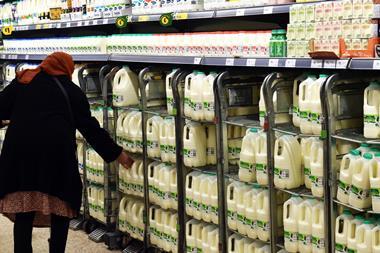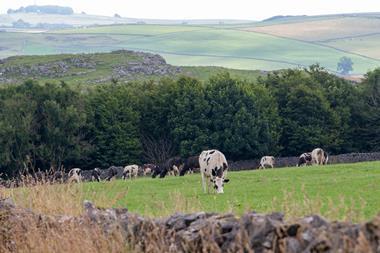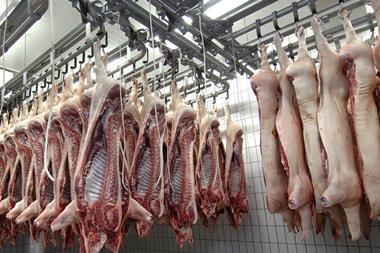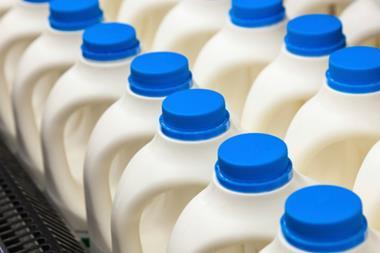
Tightening milk output is set to continue into next year across Europe, including in the UK, as input costs soar and as farmers in the EU scramble to meet the bloc’s green-oriented production rules.
In its latest biannual report on European dairy, the US Department of Agriculture this week said EU-wide cow milk production would drop by over 430,000 Mt this year, after a similar-sized fall in 2021.
The slide was likely to continue, the USDA surmised, with farmers having to “adjust their production systems” to meet “conditionalities set out by the EU’s revised Common Agricultural Policy and the accompanying Farm to Fork Strategy”.
“In the past decade, milk production in the EU27 has become increasingly constrained by environmental and animal welfare regulations,” according to the USDA’s assessment. “Lots of farmers are quitting dairying as they choose not to make the needed investments to meet the new requirements.”
Europe’s falling milk output was set to run counter to global trends, according to report published on Wednesday by the Organisation for Economic Co-operation and Development, which projected global milk production would grow by 1.7% a year for the rest of the decade – “faster than most other main agricultural commodities”, driven in part by increasing output in India, already the world’s biggest milk producer.
While farm productivity in Europe looked set to continue to increase, according to the USDA and OECD, that jump would be “unable to compensate for this loss of dairy cows”, the number of which has fallen by almost 1.5 million since 2016, the USDA said – citing Eurostat figures.
In its new report, which was published with the UN’s Food and Agriculture Organization, the OECD said European herds would shrink by 0.5% a year over the decade to 2030.
“Environmental legislation could have a strong impact on the future development of dairy production,” the Paris-based OECD added.
Tight UK supply
Last week AHDB reported that the UK’s dairy supply would be affected by both falling domestic output and the drop in production in the EU, which, despite Brexit, remains the UK’s main dairy export destination and source of dairy imports.
What AHDB dairy analyst Patty Clayton described as the “combined effects of reduced milk production and constrained trade” had already “impacted availability of dairy products in the first quarter of 2022 in both the UK and the EU”.
“In the UK, milk deliveries have been lower on an annual basis since August 2021,” Clayton said, with butter output also down and prices up as milk supplies fell.
Elsewhere in Europe, butter prices tracked upwards in major dairy producers France and Poland, according to IHS Markit’s June prices report.
AHDB three months ago predicted British milk output could drop by over 5% this year, with Clayton saying at the time the war in Ukraine had added to already-soaring fuel and transport costs.
While the UK recently postponed the imposition of physical checks on food imports from the EU, sourcing replacement milk supply from the bloc would likely nonetheless become more challenging if production also keeps falling among the 27 member states.
According to the Germany-based International Farm Comparison Network, which focuses on dairy, “shrinking global milk supply is meeting steadily increasing demand, and farm profitability is under increasing pressure with milk and feed prices at unprecedented levels”.
“The dairy supply chain has not seen inflationary cost pressures of the magnitude being witnessed today for many years, if ever,” Kite Consultancy, which advises the UK dairy sector, said in recent report. It labelled the cost rises as “ubiquitous across every aspect of the supply chain”.
UK farmgate milk prices in turn have shot up, with Freshways to hit 50p a litre by September and First Milk this month announcing at a 3.5p increase in its member price per litre to 46.5p by August. Others to recently nudge their prices towards the 50p-a-litre mark have been Arla and Müller.
Some light could be at the end of the tunnel, however, with data published this month by Mintec showing prices down in May across the EU and UK, due to the “peak season of the milk flush” being hit, pushing additional supply on to markets. The month-on-month price drop did little to offset longer-term rises, however, with Mintec Benchmark Prices for UK milk up over 69% year on year.







